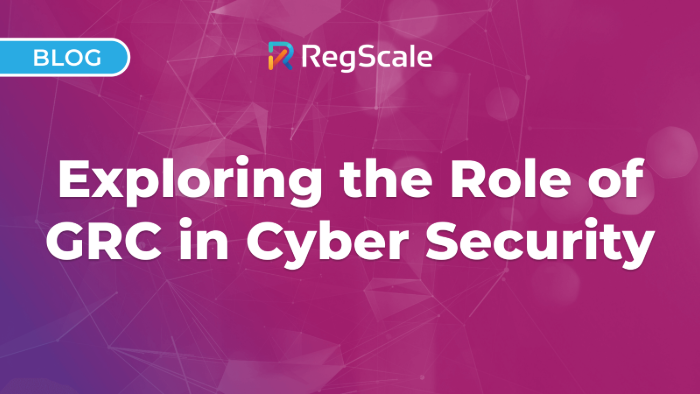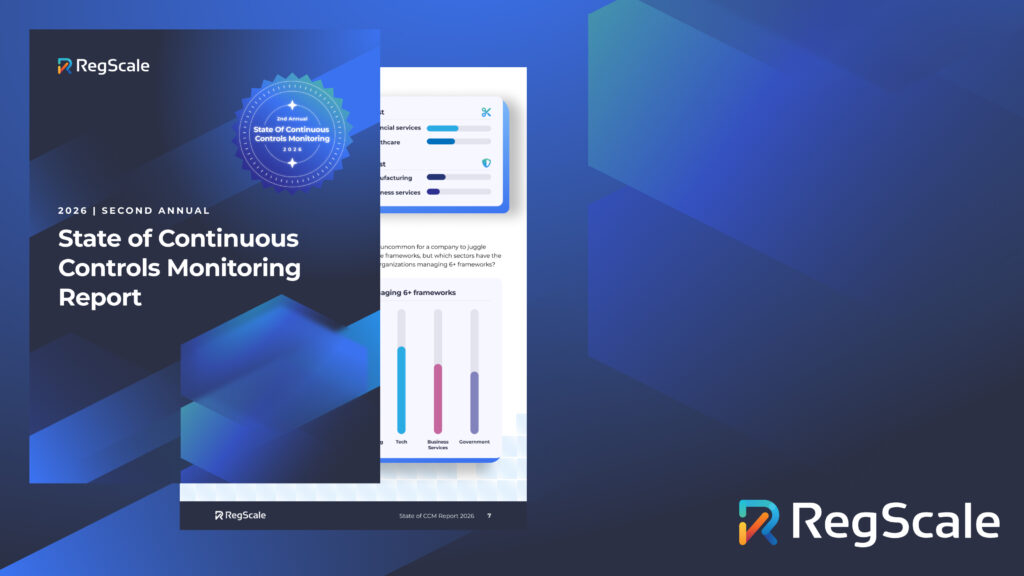Exploring the Role of GRC in Cyber Security

A French military contractor, a Maryland healthcare network, a large energy industry corporation, and a UN agency. What do they all have in common? They all announced that they were the targets of ransomware attacks and data breaches last month.
With cyber threats becoming increasingly sophisticated and increasingly common, GRC in cyber security has emerged as a crucial topic. Governance, Risk Management, and Compliance (GRC) provides a structured approach to aligning IT security efforts with business goals, helping organizations maintain a robust security posture in the face of widespread attacks around the world.
Today, we’ll explore how GRC in cyber security helps organizations strengthen their defense against cyber threats, streamline their compliance management, and make informed decisions about risk mitigation. Whether you’re just beginning to implement a GRC program or looking to optimize your existing framework, this guide will help you understand the fundamental components and best practices for strong cybersecurity.
What Is GRC?
In a nutshell, GRC is a structured way that organizations can meet regulations, manage risk, and maintain an effective security posture. Rather than treating each individual component — governance, risk, and compliance — as a separate consideration, a well-implemented GRC framework unifies them to create a comprehensive strategy.
The concept of GRC was originated by the Open Compliance and Ethics Group (OCEG) in 2002, and it’s since evolved to be a vital part of cybersecurity strategy. Below, we’ll break down each part of the concept and explain how they contribute to stronger data security.
Governance
First, the governance part of GRC encompasses the leadership structure, policies, and decision-making processes that guide how an organization protects its information security assets. Effective governance aligns cybersecurity measures with clear accountability and oversight mechanisms.
A few key aspects of governance include:
- Developing and maintaining organization-wide security policies
- Establishing roles and responsibilities
- Defining metrics for measuring security performance
- Creating frameworks for stakeholder communication
- Ensuring that resources are allocated effectively to security initiatives
Risk
Next, risk management forms the analytical core of GRC: identifying, assessing, and mitigating cybersecurity risks that could impact an organization’s digital assets. Continuous risk management involves evaluating threats and vulnerabilities in real-time and responding as needed to protect sensitive data.
A robust risk management program includes:
- Conducting point-in-time or (preferably) continuous risk assessments to identify potential threats
- Prioritizing risks based on potential impact and likelihood
- Developing and implementing risk mitigation strategies
- Regularly evaluating the effectiveness of security controls
Compliance
Finally, the compliance element of GRC ensures that organizations meet all relevant regulatory requirements and industry standards. From GDPR to HIPAA and ISO 27001, there’s an increasingly complex regulatory landscape that businesses must manage while ensuring their cybersecurity measures satisfy compliance requirements.
Effective compliance management within GRC includes:
- Tracking and interpreting regulatory requirements
- Implementing necessary security controls to meet compliance standards
- Conducting regular internal audits
- Maintaining evidence and documentation
- Preparing for and responding to external audits
Why Is GRC Essential for Cyber Security?
GRC in cyber security is more than just a set of guidelines; it’s a vital component of any organization’s defense strategy. GRC helps businesses ensure that they have a structured plan to protect their critical data while maintaining regulatory compliance.
GRC also enables organizations to take a proactive rather than reactive approach to security, identifying and addressing vulnerabilities before they’re ever exploited. This structured approach to risk management helps prevent data breaches and reduces the likelihood of security incidents.
Additionally, GRC plays a crucial role in optimizing resource allocation, allowing companies to prioritize their cybersecurity investments based on actual risk levels rather than perceived threats. This risk-aware approach ensures that security budgets are spent effectively, maintaining comprehensive protection across the most critical parts of the organization.
Lastly, GRC works to streamline compliance management. With regulatory requirements becoming increasingly complex, GRC tools can help organizations automate compliance processes, reduce redundancy, and ensure consistent adherence to multiple regulatory frameworks simultaneously. This efficiency not only reduces the risk of non-compliance but also frees up resources for other critical security initiatives.
Top Tips for Implementing GRC in Cyber Security
Of course, implementing a robust GRC framework doesn’t just happen overnight. It requires strategic planning, technological support, and organizational buy-in — sometimes in the face of significant obstacles. Whether you’re launching a brand-new GRC program or optimizing an existing one, these practical tips will help you create a more secure, compliant, and risk-aware environment.
1. Start with a comprehensive assessment. First, you’ll want to conduct thorough internal audits to evaluate your existing security controls, identify gaps in your compliance management, and more. Understanding your starting point allows you to develop an effective GRC strategy that addresses your organization’s specific needs and challenges.
2. Integrate tech tools strategically. While GRC software and automation tools can significantly streamline your security efforts, it’s crucial to choose solutions that align with your organization’s business processes and maturity level. Look for GRC tools that offer scalability, integrate well with existing systems, and provide robust reporting capabilities. The right technology should enhance your ability to monitor security and risk, track compliance requirements, and respond to incidents effectively.
3. Build a risk-aware culture. Successful GRC implementation extends beyond technology and processes; it also requires building a company-wide culture of security awareness. This involves well-structured training programs, clear communication of security policies, and even regular cybersecurity exercises. When employees at all levels understand the importance of GRC, they’re more likely to follow security measures.
4. Establish clear metrics and reporting. Develop specific metrics to track the effectiveness of your GRC program, from incident response to compliance status and risk mitigation efforts. Regular reporting helps demonstrate the value of your GRC initiatives while also providing data for informed decision-making about future security investments.
5. Foster cross-departmental collaboration. Ultimately, a successful GRC program requires coordination between multiple departments, including IT, legal, compliance, and more. To facilitate collaboration among these groups, you’ll want to create clear workflows and communication protocols. This approach ensures that security measures will support rather than hinder business objectives.
6. Implement continuous controls monitoring. Static security measures are no longer sufficient in today’s dynamic threat landscape. By establishing continuous controls monitoring processes that can detect and respond to potential security incidents in real-time, you can take a more proactive approach and identify vulnerabilities before they become an issue.
7. Plan for the future. Finally, your GRC framework should be flexible enough to adapt to new regulatory requirements, emerging cyber threats, changing priorities, and more. Conducting regular reviews of your GRC strategy will ensure that it remains effective and aligned with both compliance requirements and business goals. Consider implementing a structured process that allows for periodic assessments and adjustments to your GRC program.
RegScale’s GRC Solution
As organizations navigate the complex landscape of cybersecurity risks and regulatory requirements, traditional paper-based GRC processes are proving increasingly inadequate. These outdated approaches not only drain valuable resources but also create problematic data silos that inhibit effective risk management and compliance monitoring.
RegScale’s award-winning CCM platform addresses these challenges by leveraging AI and extreme automation to slash manual processes. The platform leverages automated evidence collection and delivers near real-time insights, allowing companies to accelerate their certification processes, reduce operational costs, and strengthen their overall security posture.
Want to learn more? Explore how to future-proof your GRC program and stay agile in the face of evolving cyber threats with RegScale’s comprehensive GRC resources.
Ready to get started?
Choose the path that is right for you!
Skip the line
My organization doesn’t have GRC tools yet and I am ready to start automating my compliance with continuous monitoring pipelines now.
Supercharge
My organization already has legacy compliance software, but I want to automate many of the manual processes that feed it.
